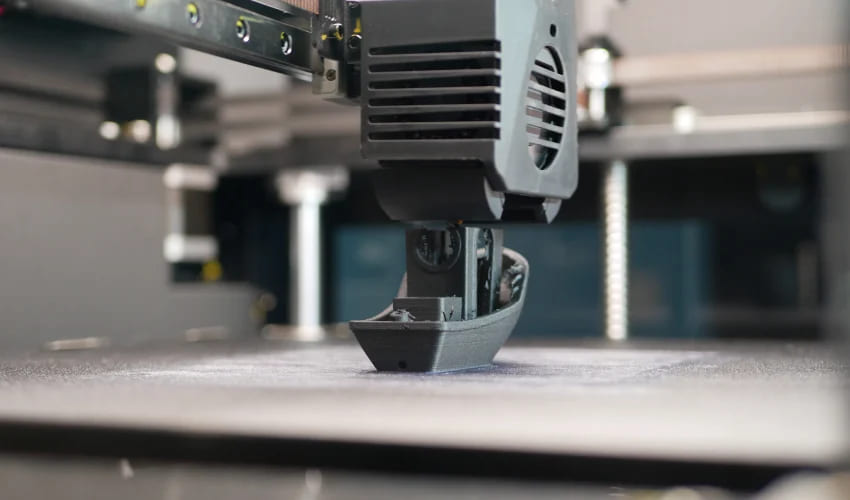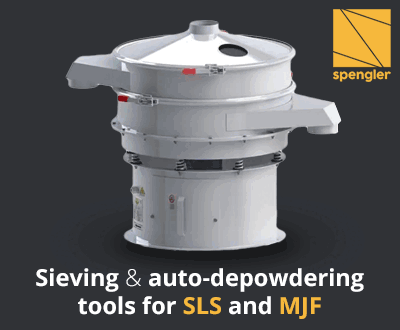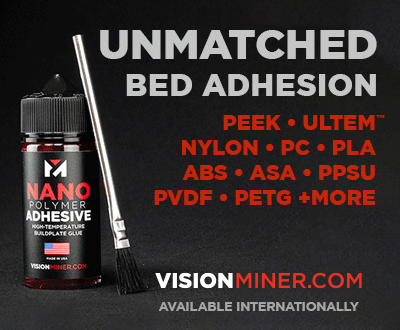The Complete Guide to Fused Deposition Modeling (FDM) in 3D Printing

Fused Deposition Modeling (FDM) or Fused Filament Fabrication (FFF) is the most widely adopted 3D printing technology. In this explanation, we will delve into the origins of this technology and how it operates.
The FDM 3D printing process was conceived and patented by Scott Crump in 1989 and introduced to the market in 1990 by his company, Stratasys (USA), which he founded. As the FDM process was under patent protection, only Stratasys could officially use the FDM acronym. However, with the rise of the reprap movement in 2005, Adrian Bowyer’s team introduced the alternative acronym FFF, representing Fused Filament Fabrication. This term specifically highlighted the use of filament, while Stratasys’ early FDM printers used granules. Essentially, both acronyms refer to the same additive manufacturing process, with no substantial technical distinction between them.
Basic Principles of FDM Printing
FDM printing is widely regarded as one of the most fundamental and accessible 3D printing technologies. Its functioning relies on five key components:
- Printing Plate: The surface on which the object is printed.

- Filament Spool: The printing material that is in the form of a filament.

- Extruder: A stepper motor equipped with a drive system that moves the filament for printing.

- Motion System: The system responsible for moving the print head and the printing plate along the X, Y, and Z axes, enabling the creation of three-dimensional objects.

- Print Head: The component that applies the material layer by layer.

In most cases, FDM technology uses thermoplastic materials, which are loaded into the printer as filaments. The filament is driven towards the print head, or hotend, by an extruder motor. At the hotend, the material undergoes resistance heating, reaching its melting point and turning into a molten state. It is then extruded through a narrow nozzle.
Alternatively, pellets, which are small plastic particles, can be used instead of filament. These pellets are extruded through a hopper. Regardless of the initial form of the material, the printing process remains the same. Once the material is extruded, the molten plastic is deposited layer by layer onto the printing plate. To facilitate solidification, a fan is often employed to cool the deposited layers.
Available Materials for FDM Printing
FDM printing offers the advantage of being compatible with a diverse range of materials, particularly thermoplastics. Over the years, the plastic injection molding industry has developed a wide array of thermoplastics, many of which are readily usable for FDM printing. Among these materials, PLA, PETG, and ABS are the most widely favored. In our comprehensive article on this subject, we delve into the details and explore a wide spectrum of materials suitable for FDM 3D printing. These materials encompass standard options, as well as more intricate choices such as flexible materials, hybrid materials, filled materials (including composites, metals, wood, etc.), and high-performance materials.

Francofil markets filaments made from co-products containing recycled waste such as oysters, shells, cereals, and coffee.
In addition to the conventional plastic filaments commonly used in FDM printing, there is a wide range of other materials that can be used. These include filled materials like metal composites and ceramics, allowing for the creation of unique printed objects. Surprisingly, it is even possible to print with filaments made from plastics that incorporate waste products from beer or coffee.
The availability of materials for FDM 3D printing is extensive. Filaments are manufactured by numerous companies and are generally offered in two standard sizes: 1.75mm and 2.85mm. These standardized sizes ensure compatibility across various FDM printers and simplify the material selection process for users.
Consider the Following Factors for Achieving High-quality FDM Printing Results.
The quality of FDM printing is frequently affected by two factors: the nozzle diameter and the layer height. A larger nozzle diameter allows for higher individual layers. However, excessive layer height can result in a loss of detail and produce stair-stepping errors. The most commonly used nozzle size is 0.4 mm, which enables printing with layer heights between 0.1 and 0.3 mm.

Individual layers of material are visible in some prints.
In FFF 3D printing, the material can be extruded via two different methods:
The first is Bowden extrusion, in which the material is fed from the extruder to the hotend in a Bowden draft tube. This configuration is very light because the printhead only has to support the hotend and not the extruder, which is therefore remote.
The second is the direct drive configuration, also called direct drive. In this method, the extruder is placed above the hotend and the material then sinks directly down into the hotend to be melted. This type of configuration is ideal for precise extrusions and flexible materials, as the absence of the Bowden cable significantly reduces friction on the filament, preventing stringing.
Recommendations for the Application of Molten Material
Although FDM 3D printing is accessible and relatively easy to use, problems sometimes occur. Learn more about the most common printing errors in FDM 3D printing HERE.
In addition, FDM 3D printing has some limitations because the molten material that is deposited layer by layer is subject to the force of gravity. For this reason, some parts printed “in a vacuum” and overhanging may also have printing defects. In this case, supports, i.e. printed pillars, must be used to hold parts of the model.

Some parts printed by fusion layering require substrates.
Market for FDM Printers
Although FDM printers operate on the same fundamental principle, they can vary greatly in terms of features and capabilities. These variations aim to facilitate the printing process, enable the production of larger parts, and allow for the use of advanced materials. Examples of such variations include large-format printers, IDEX (Independent Dual Extrusion) printers, and high-performance printers, among others.
This diversity results in a vast market for FDM 3D printers, encompassing a wide range of devices. On one end, there are affordable office machines costing a few hundred dollars, while on the other end, there are industrial-grade printers found in factories that can cost hundreds of thousands of dollars. Recognized names in the entry-level segment include Creality and Anycubic, while Stratasys, 3D Gence, and 3ntr are well-known for their professional-grade printers.
With the abundance of FDM 3D printers available, it is possible to create a wide variety of products, ranging from small prototypes to rockets, decorative items, and even buildings.
Due to its affordability and user-friendly nature, FDM 3D printing is commonly employed in rapid prototyping to streamline and expedite the iterative research and development process.
For more information about 3D printing technologies, click HERE.
What do you think of our FDM guide? Let us know in a comment below or on our LinkedIn, Facebook, and Twitter pages! Don’t forget to sign up for our free weekly Newsletter here, the latest 3D printing news straight to your inbox! You can also find all our videos on our YouTube channel.







how can i cite this site properly if the author’s last name is not properly given